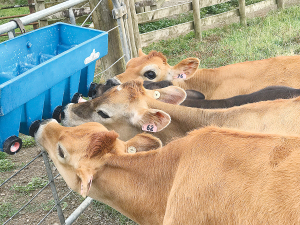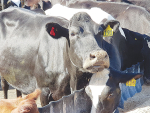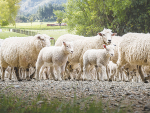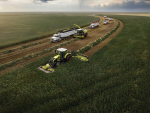Colostrum is produced only in the first milking after calving, it is higher in protein and fat than milk, contains a wide array of other beneficial bioactive molecules, specific nutrients, hormones and growth factors, and has a distinctive yellow colour.
Following the first milking a cow will produce ‘transition milk’ for a few days, which only has some of the characteristics of colostrum. Normal milk production will happen from about four days post-calving.
Colostrum is very energy and nutrient dense, which is helpful when feeding a very young calf with an immature digestive system.
Calves are born with a naive immune system and have no resistance against bacteria and viruses that can cause disease. Colostrum contains very high concentrations of immunoglobulins (defence proteins), and for the first 24 hours or so after birth a calf’s intestine is porous to these antibodies, allowing the calf to absorb them and transfer the immunity of the mother to the calf.
There is a rapid decline in the ability of the calf to absorb immunoglobulins after 12 hours of birth.
At around 24 hours of age the calf stops being able to absorb those immunoglobulins and this ‘gut closure’ is the reason it’s so critical to get colostrum into newborn calves (quantity, quality, quickly) immediately after collection from the calving areas.
Even after gut closure, colostrum has a protective effect, as immunoglobulins floating freely in the intestine can bind to bugs to reduce their disease-causing ability to the calf.
It is important to note that the immunoglobulin concentration of colostrum coming out of a cow declines rapidly following first milking, and bacterial contamination levels can increase rapidly in colostrum that isn’t stored well. Therefore, feeding fresh, first milking colostrum or Jumpstart is advised for newborns.
Newborn calves should drink 15% (2.5-4 Litres) of their body weight in colostrum within the first 12 hours, but the sooner the better.
If a calf refused to drink colostrum at the first feed, try feeding colostrum after 3-4 hours or consider using a stomach tube to administer colostrum. Ideally newborn calves should continue to be fed colostrum/transition milk for the next 4 days after birth.
Milk Time
Calves are born with an underdeveloped digestive system.
Therefore, for the first four to six weeks of their life they exclusively rely on milk or milk-based feeds for nourishment before their digestive tract matures sufficiently to digest solid feeds.
Vat milk and good quality milk-based milk replacer provide high quality easily digestible nutrients to calves during the first 2 months of their life. Research has shown that increasing milk supply (ranging between 4-10 L/day) of either vat milk or milk replacer during the first 2 months of life promotes growth and is beneficial to the development of various organs (e.g. gut and mammary gland). Further, international studies have shown that accelerating pre-weaning growth through improving milk supply can promote greater lifetime milk production and studies in New Zealand have shown improved growth and thus reduced time to cull and environmental impact without compromising meat quality in dairy-beef heifers.
Therefore, feeding calves more milk (around 20% of their initial body weight, 6-10 L/day for calves with 25 to 50kg of initial body weight) during the first 2 months of life will not only improve growth and organ development of the calves but could potentially enhance the lifetime performance of the calves in commercial herds. It is highly recommended to feed calves consistently.
Changing the feeding time and abrupt changes in feed type (between vat milk and milk replacers) or volume fed can perturb the digestive system of the calves causing scours and/or metabolic disturbances that can affect calf health, growth and wellbeing. Maintaining cleanliness of the feeding equipment and the rearing environment (pens and milk preparation areas) is equally important for successful milk feeding and calf rearing programmes.
It is a good practice to clean and sanitize bottles, teats, mixing and storage equipment at every use to reduce pathogen loads.











